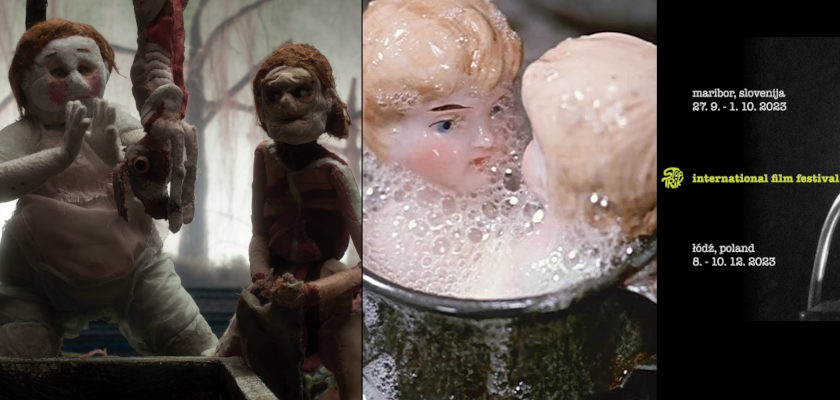“When the Routine Becomes a Ritual”: A Conversation With Martina Meštrović About ‘Her Dress for the Final’
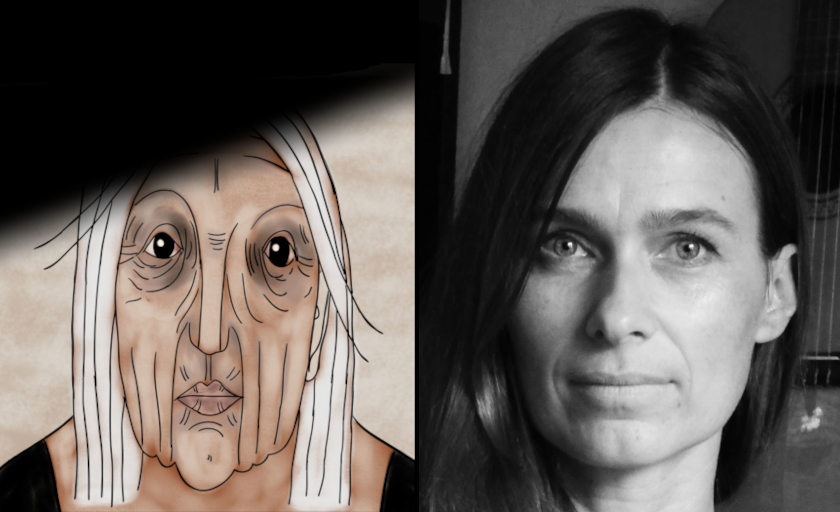
Martina Meštrović is an animation director who does not crave attention. Yet, the continuing successes of her last work, ‘Her Dress for the Final’, willingly or not, position this Croatian creator of gently gendered realities in a spotlight. In the last season, this film was selected for the competition programmes at over thirty festivals (among them Annecy, Animafest Zagreb, Ottawa, Fantoche, and Cinanima), and it commences the 2024 journey in the competitive line-up of the Tampere Film Festival. Over half a year has passed since I talked with Martina Meštrović one sunny Animafest afternoon. In Zagreb, the film was presented in the Croatian Competition and it gained Special Mention from the Jury composed of Laura Gonçalves (Portugal), Pavel Horáček (Czech Republic), and Irena Jukić Pranjić (Croatia).
Meštrović’s personality does not overshadow a prime object of her interests – i.e., aesthetically differentiated imaginaries revolving around the ideas of transforming bodies, crystallizing feelings, and ever-changing emotions. The author went a long way from the finesse but conventional, 2D visuality of ‘Peter’s Forest’ (‘Petrova šuma’, 2016), through the collaborative, mixed-media documentary ‘A Cat Is Always Female’ (co-dir. Tanja Vujasinović), arriving at her recent work, a subtly experimental combination of 2D and stop motion techniques – ‘Her Dress for the Final’. The last two films convincingly expose characters of senior women who are strongly aware of their desires, weaknesses, and powers.
There are two grand subject matters to be dealt with in a conversation about ‘Her Dress for the Final’: the unique story and the innovative approach to the technique. When asked where she wanted to start, without any hesitation, Meštrović responded: “From the unique story”. Concept-driven and long-maturing, the origin story of this film is highly personal and intimate. In Meštrović’s’ own words: “At one lunch, my father told me that my grandmother had this idea to paint her wedding dress black so she could be buried in it. She actually did it. These didn’t match – the action and herself, I saw her as an ordinary old woman but this was bizarre. I had been grappling with that idea for years. It took time for me to mature, shift my perspective, and decide on the kind of film I wanted to create. Approaching fifty, I experience aging differently, particularly about older women and grandmothers, including my own grandmother, who inspired the film. However, most of the film is fictional, a product of my imagination about what we don't know regarding grandmothers, women, and people in general.”
Watch 'Her Dress for the Final' trailer:
The relationships between facts, life experiences of real people, and artistic imagination which enriches reality with metaphors and phantasms, are very complex in this film. Certain elements are fully imagined, yet they are essential in the visual as well as psychological construction of the main character. She, the woman, walks naked around the apartment, wakes up at 5 PM, or drinks alcohol during long lonely hours. As we learn from the filmmaker these activities are thoroughly contrasting the routines of Meštrović’s grandmother. These are significant interventions of imagination into remembrance and they serve quite important storytelling purposes. Meštrović explains this in a nuanced way: “I tried to build the character to be interesting. And for me, it was a nice idea to somehow contrast that naked body with her wedding dress. I also just wanted to show a woman’s body who is not perfect, who has traces of delivery and it’s some kind of the mirror of life, all these wrinkles and skin which are not perfect.”
Some motifs however hold true in Meštrović’s memory – above all welcoming death in a black dress but also: “the moment when she is watching the basketball – she was really a huge fan of basketball, especially Cibona, a famous club from Zagreb. She knew all the players at that time. This is something really connected to her.” Some of the motifs came from the real existence of the author’s family but were used as a metaphor deprived of realistic meanings, as e.g. a photo of the grandfather that appears in front of the viewer’s eyes with an erased face: “There is an idea that when you are dying, the memories are fading. This moment in the film should feel as if you saw the spirit of somebody and
you can’t remember the details of their faces anymore. In the first scene, there is a picture from their wedding, again we don’t see his face because he is dead.”
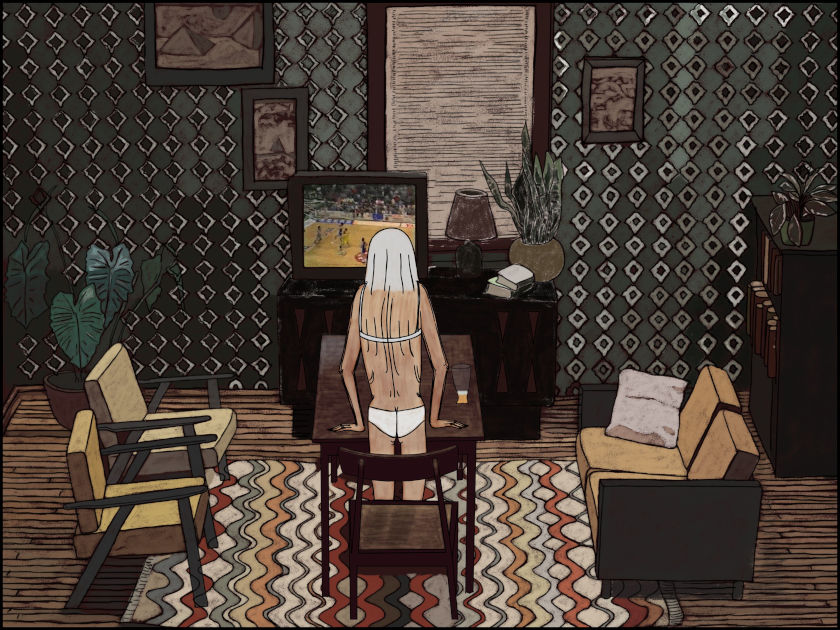
The opening shot traverses through the corridor of an average apartment and we look closely at the pictures and portraits hung on the wall. We ‘sneak peek’ into the bedroom, seeing the main character still asleep. The viewers keep on looking at her, quite frequently the gaze has to cut through surfaces (mirror, glass) or beyond obstacles (walls, doors, plants, ceiling fan blades, etc.). There is a huge ambiguity to this act of perception. On the one hand, the viewer is a voyeur who stares at a lady when she kisses her mirror reflection, drinks and smokes, or sits on the toilet. At the same time, the viewers are continuously kept at a distance – whatever happens in this reality, it comes to life only
because the woman wants it and makes it happen. Whatever her breasts, skin, and lipstick might look like, appearances become sensual whenever she feels like it. The same rule applies to her hag-like persona – if she feels like being a slob, so she performs. Martina Meštrović agrees with this interpretation: “There was an idea that I’m an observer and I’m sneaking in. I was trying to find out what happened on this particular day. The first idea was to show a simple, plain day. And to somehow underline the moment when the routine becomes a ritual. I knew that my grandmother mostly stayed at home as she was ill and not really going out. So, I guess that there was something in her routines which made her do it one day.”
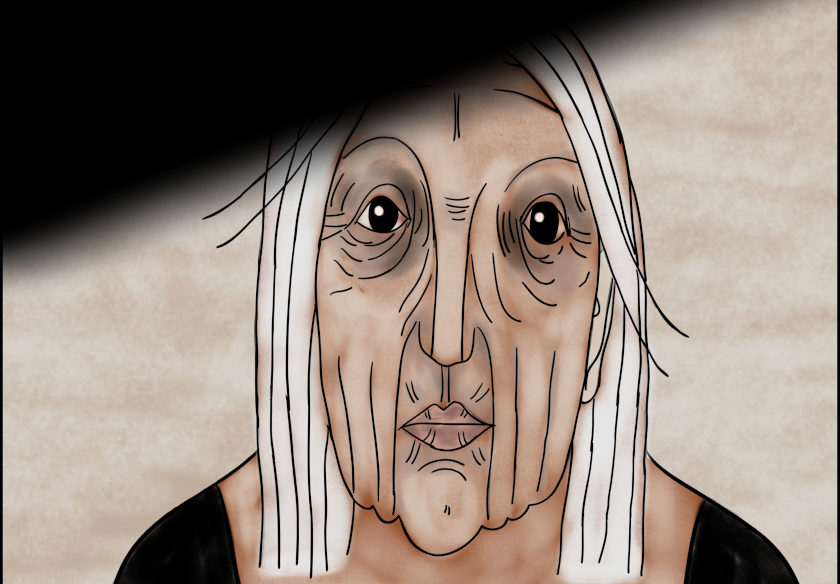
The act of turning the white dress black renders all the love, passions, emotions, and desires into acceptance of loss and departure. And here we had to start talking about the technical aspects of the film as all the artistic decisions were dictated by a need to embody and represent this very transgressive moment in a person’s life.
Meštrović’s mentions the creative contribution of her husband, an animator, and musician, Marko Meštrović, who did some parts of 2D animation: “I wanted somehow to put attention on the changes of those weird moments. Marko suggested switching from 3D to 2D, whenever the character touches anything, the objects become 2D. It was a good idea because when things become 2D, it is coming to the end of life, shrinking to two dimensions”. And let us add – it is a surprising artistic gesture that goes against cognitive habits. Interestingly, there is one more level to how this film is a ‘family affair’ for the Meštrović household: “My daughter, Kora, helped me. She did the design research. She wanted the flat to have the 1980s décor. She prepared her findings online, some stuff which I really liked. Based on Kora's sketches, Nenad Laktašić did the production design.”
The bits of stop motion on the puppet house-like set were animated by Ivana Bošnjak Volda while the set and props were created by Nenad Laktašić, Suzana Andrlon Radojković, and Martina Meštrović herself. The director of photography Jasenko Rasol worked with Meštrović already on her previous film ‘A Cat Is Always Female’: “We started our friendship when making that film and he was really passionate about the new one because of the set. He has never done something like this so we spent a lot of time in the garage discussing camera movements, and fixing lights, he was really careful about each detail.”
Martina Meštrović underlined the significance of collaboration with Iva Kraljević, a well-known and well-established editor and cinematographer who stands behind major Croatian animations of the past years. In ‘Her Dress for the Final’ Kraljević was an editor and sound designer. It was her idea to add subtle sounds of the footsteps in the early scene to build the atmosphere of eerie intimacy. Meštrović spoke about the sound designer’s motivation to use recognizable songs in the music score: “Iva adopted a documentary approach to sound design. The sounds of everyday life stand in contrast to Drago Diklić's song, which evokes a sense of nostalgia for another era. In contrast, Mary May brings forth the emotions of our contemporary era with her exceptionally powerful, emancipated voice.

Through music, we aimed to underscore the grandmother's developmental journey from the romantic 1960s to the present day. ”The creative relationship between Meštrović and Kraljević went even further as the editor and sound designer was one of a few people with whom the director shared the original idea for the story, long before the film made it to the shooting phase. Ever since then, Iva Kraljević, a friend and artistic collaborator, was involved in the process of crystallizing this concept: “I had a mirror in Iva. She’s really creative and I like how she thinks”, Martina added.
A year before the film was finally finished, Martina Meštrović was aiming at closing the production – according to the script and production timeline, everything was done. “But somehow something was missing”, she recalled, “When I watched the ending, I didn’t feel emotions, I didn’t feel anything. So, I spent one more year without a budget, working more on the film, and after this additional year, it was finally complete. I added the effects of ‘fata morgana’, the kissing, and the physical parts. Probably all of us feel like this sometimes, that at one point in life we need and miss very much the human touch”. Overall this process took three years.
The ending of ‘Her Dress for the Final’ is a beautiful sequence of hybrid aesthetics. The woman goes to the balcony, and puts her just-painted black dress to dry. The wind plays with her hair and she succumbs to the vision. Realistic visuals turn into a semi-abstract scene of lovers caressing each other and finding pleasure in sexual closeness. The woman’s face fades off as we listen to ‘Softest Tune’ by Mary May. This modern and cosmopolitan singer gives a fresh voice to the Croatian music scene thus contrasting Drago Diklić's ‘Još samo večeras’ a 1960s romantic chanson heard earlier in the film.
Music tastes aside, both songs have powerful scores and memorable lyrics, so they both can be anthems of passionate lovers. The image of moving fan blades returns and now we look through them at the bodiless, black dress, blowing freely in the air. “She might have lived alone but she had high spirit”, said Meštrović apparently admiring the strength of both – the character she made and the woman of her lineage.
Meštrović’s next project is in the phase of development, and again she creatively cooperates with Iva Kraljević. As a self-aware author, she builds on her previous approaches. We can expect certain differentiating similarities to ‘A Cat Is Always Female’ and ‘Her Dress for the Final’ – especially in terms of presenting another strong, senior female character. This time Meštrović wants to focus on the heritage of Mladen Stilinović and Branka Stipančić who were a couple strongly involved in the Croatian art scene of the second half of the twentieth century. Stipančić is an art historian and curator, while Stilinović was a conceptual artist: “I want to tell a story about their life, love for art, but I want to show it from two different perspectives. He’s not here anymore – he’s dead. And she continues to exhibit his works and take care of his artwork. Once she told me that the artist who didn’t exhibit was dead. So, she keeps him alive somehow. I also find my motivation in the fact that I and Marko also spend life in love and art together”, Martina talked more and more eagerly about this project but eventually paused: “I have to stop with the research and concentrate on the film because I cannot put everything in it.”
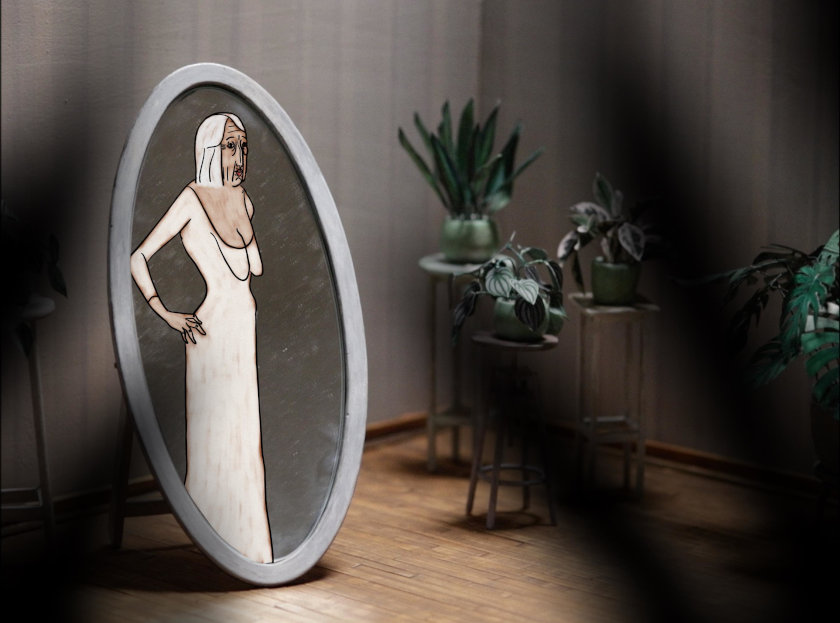
‘Her Dress for the Final’ Credits
Written, directed, design and compositing: Martina Meštrović / Animation: Martina Meštrović, Marko Meštrović, Ivana Bošnjak / Director of photography: Jasenko Rasol / Sets and props: Nenad Laktašić, Suzana Andrlon Radojković, Martina Meštrović / Editing and sound design: Iva Kraljević / Sound mix: Hrvoje Nikšić / Music used: Drago Diklić 'Još samo večeras', Mary May 'Softest Tune' / Executive producers: Mia Bučević, Sara Jakupec, Marijana Veljović / Producer: Igor Grubić (Kreativni sindikat) / Distribution: Vanja Andrijević (Bonobostudio)
About Martina Meštrović
Martina Meštrović (1974) graduated (Sculpture department) from the Academy of Fine Arts in Zagreb in 1998. She has held several solo and group exhibitions. In 2004, she joined the art collective Kreativni sindikat, working as a 2D and 3D set designer, animator and director. She lives and works in Zagreb. Filmography: ‘Her Dress for the Final’ (2023), ‘A Cat Is Always Female’ (2019), ‘Peter’s Forest’ (2016), ‘Bla’ (2013).
contributed by: Olga Bobrowska






